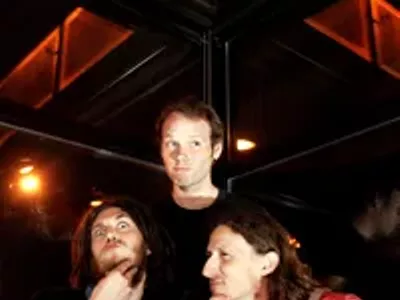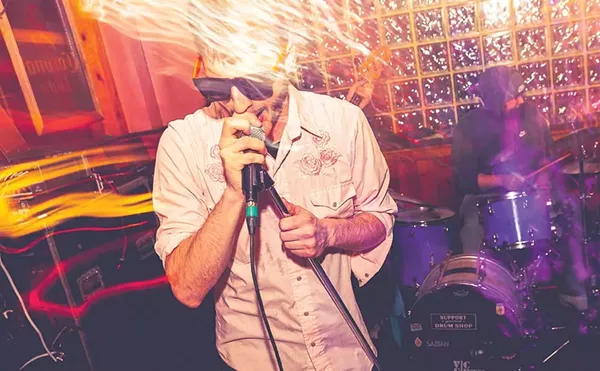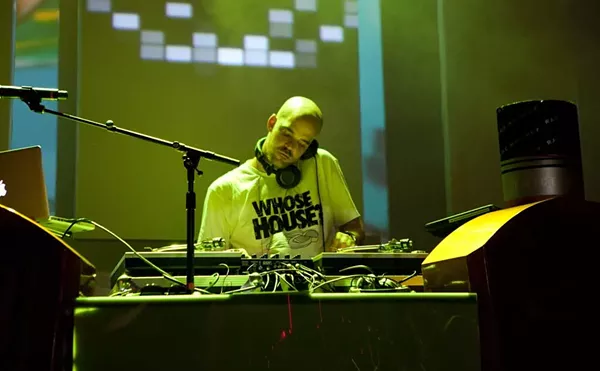Thanks to the YouTube, everybody with a video-enabled cell phone can snag a nationwide audience with a few mouse clicks. (Dramatic prairie dog, anyone?) In fact, it's hard to recall just how we wasted our time before viral videos started cluttering the Internet. Every once in a while, though, we are faced with how making a video was out of most people's reach a surprisingly short while ago. Even 20 years ago, cameras were bigger and needed to be calibrated by technicians. The tapes were bulky and heavy. Editing needed to be done in a studio.
Which is why, in 1987, the toy moguls at Fisher-Price probably thought they had a sure winner in the PXL-2000: An angular plastic camcorder for children that recorded image and sound directly onto standard audiocassettes. The tiny tapes meant the image was crude: Instead of hundreds of lines of color video signal, the PXL-2000 recorded about 2,000 coarse blocks in shades of gray, prone to dropouts and static, perhaps comparable to cell-phone quality video.
Unfortunately, the toy fell victim to the progress that produced it. It was quickly eclipsed by much higher-quality, smaller cameras using other formats, as the electronic technology raced forward. But the quaint device has enjoyed enduring attention from video artists, who have affectionately dubbed the castoff camcorder "the TonkaCam."
This love affair with low-tech is only part of an interesting cultural countercurrent in the digital age: Much like visual artists might use toy silkscreen machines like the Print Gocco or urban craft types might prize rummage-sale Colorforms, some audiovisual artists are "analog junkies," dusting off tube sound equipment or resorting to DIY film processing — using "legacy" media for their allegedly warm, tactile properties.
And that affection is all over a lovingly curated collection of "electronic folk art" that's coming to the Detroit Film Center on the evening of Aug. 11. Pixelcam promoter Gerry Fialka will conduct a quick workshop and then screen a collection of short videos produced on the PXL-2000. Fialka, a sort of tireless traveling crusader for the medium, has compiled the collection from the last three years' PXL THIS film festivals.
This 90-minute program contains documentary shorts, humor bits and essay-type videos, but the standouts are otherworldly experiments with surprisingly deep moods. In the able hands of visual artists, the humble camera can produce imagery that looks like a transmission from another planet, a recorded dream, or that cursed videotape from The Ring. Limited by the crudity of the image, many artists simply go wonderfully avant-garde, and several of the unusual productions have an eerie theatrical quality to them, sometimes from basic lighting effects or simple puppetry. Some effective experiments include Souvenir, a five-minute story set inside a snow globe, or Fish, a story set inside a fish bowl in an apartment, or Babblefesto #2, one long structuralist editing gag set to voice-mail hell.
Much of the rest is a grab bag: Whether you're watching war worker Helen Possert recalling the summer of 1944 in Detroit (Helen Possert: A WWII Rosie) or Ann Arbor's "Shaky Jake" serenading passers-by with his tuneless strumming and incomprehensible bleating (I'm in the Mood), the bits have the feeling of being deeply personal projects from a single person. And, indeed, sometimes the shorts recall art films from the 1960s and 1970s, a similar adolescent period for film technology, when faster stocks, lightweight, portable cameras and widely available processing put film cameras in the hands of consumers and visual artists, some of whom did their effects "in-camera," such as Jonas Mekas or Andrew Noren.
In the era of "fix-it-in-the-edit" gimmickry and post-production tweaks, it's interesting to note that several of the fest's pixelcam videographers do their effects in-camera. And visual art seldom gets more immediate or automatic. For instance, take the pixel short About Flowers, for which the mechanism was simply handed to an 8-year-old, who then turned it on and recorded the final "film," an open-focus, bee's-eye view of floral abundance, with cheerful narration. There's simply nothing about it to fix.
Workshop at 7 p.m., screening of Best of PXL THIS 13-16 at 8 p.m., Saturday, Aug. 11, at the Detroit Film Center, 1227 Washington Blvd, Detroit; 313-961-9936; $5.
Michael Jackman is a Metro Times copy editor and writer. Send comments to [email protected].






